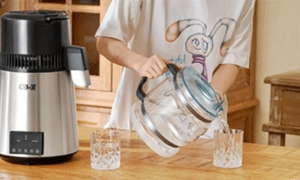Investing in a quality saddle is essential for any equestrian, whether you’re a competitive rider or a casual enthusiast. A well-maintained saddle not only enhances your riding experience but also ensures your horse’s comfort and performance. To protect this investment, proper care and maintenance are crucial. From regular cleaning to correct storage techniques, understanding how to care for your saddle can significantly extend its lifespan. In this guide, we’ll explore practical tips to help you keep your saddle in top condition. For all your saddle needs, including high-quality products, visit EQ Saddlery here.
Regular Cleaning is Key
To maintain your saddle’s appearance and functionality, regular cleaning is essential. Dirt, sweat, and oils from your skin can accumulate, causing damage over time. Here’s how to keep your saddle clean:
- Daily Cleaning: After each ride, use a soft cloth to wipe down the saddle, removing dirt and sweat. Pay special attention to the girth area, as this is often where grime builds up.
- Deep Cleaning: Once a month, perform a more thorough cleaning. Use a saddle soap designed for leather to remove any buildup. Apply it with a damp sponge, then wipe it off with a clean cloth.
- Conditioning: After cleaning, condition the leather to keep it supple. Use a high-quality leather conditioner and apply it evenly. This helps prevent cracking and maintains the leather’s natural oils.
Proper Storage Techniques
How you store your saddle can significantly affect its longevity. Here are some best practices for saddle storage:
- Use a Saddle Rack: Always store your saddle on a saddle rack rather than hanging it on a nail or over a fence. This prevents the saddle from losing its shape and reduces stress on the leather.
- Avoid Direct Sunlight: Store your saddle in a cool, dry place away from direct sunlight. Prolonged exposure to sunlight can fade the leather and dry it out, leading to cracks.
- Cover Your Saddle: When not in use, cover your saddle with a breathable saddle cover. This protects it from dust and environmental elements while allowing air circulation.
Check for Damage Regularly
Regularly inspect your saddle for signs of wear and tear. Catching issues early can save you from more significant repairs down the line. Look for:
- Stitching: Check for loose or frayed stitching. If you notice any issues, take your saddle to a professional for repair.
- Leather Condition: Inspect the leather for cracks, dryness, or uneven wear. Address these issues promptly to maintain the saddle’s integrity.
- Fittings: Ensure all fittings, such as girth straps and stirrup leathers, are in good condition. Replace any worn components to avoid accidents while riding.
Use Quality Products
Using the right products can make a significant difference in how your saddle holds up over time. Invest in quality cleaning and conditioning supplies. Avoid harsh chemicals that can damage the leather. Instead, opt for products specifically designed for equestrian gear. For a comprehensive range of products, check out EQ Saddlery.
Avoid Over-tightening Girths
While it’s essential to secure your saddle properly, over-tightening the girth can lead to saddle damage. Excessive pressure can distort the saddle’s shape and cause stress on the leather. Always ensure that your girth is snug but not overly tight, allowing your horse to breathe comfortably.
Protect from the Elements
Weather can be harsh on your saddle. Here are some tips to protect it:
- Rain Protection: If you know you’ll be riding in the rain, consider using a waterproof saddle cover. This will help prevent water damage.
- Humidity Control: In humid climates, consider using a dehumidifier in your storage area. Excess moisture can lead to mold and mildew, which can damage the leather.
- Winter Care: In colder months, pay special attention to your saddle. Cold weather can dry out leather, so regular conditioning is even more critical.
Be Mindful of Horse Health
Your horse’s health can have a direct impact on your saddle. Regular grooming is essential to prevent sweat and dirt from accumulating on the saddle. Additionally, ensure your horse is in good health and well-fitted with the saddle to avoid unnecessary wear.
FAQs
How often should I clean my saddle?
You should clean your saddle after every ride and perform a deep clean at least once a month.
What type of conditioner should I use for my saddle?
Use a high-quality leather conditioner specifically designed for equestrian gear.
Can I use regular soap to clean my saddle?
No, avoid using regular soap. Use saddle soap designed for leather to prevent damage.
How can I tell if my saddle is fitting properly?
A properly fitting saddle should sit evenly on your horse’s back without causing pressure points or discomfort.
What should I do if I notice damage to my saddle?
If you notice any damage, take your saddle to a professional for repair as soon as possible.
Conclusion
Caring for your saddle is essential to extending its life and ensuring both you and your horse enjoy a comfortable riding experience. Regular cleaning, proper storage, and routine inspections can prevent many common issues. By following these tips and using quality products, you can protect your investment and keep your saddle in excellent condition. For all your saddle needs and quality equestrian products, visit EQ Saddlery and equip yourself with the best gear for your riding adventures. Happy riding!



































